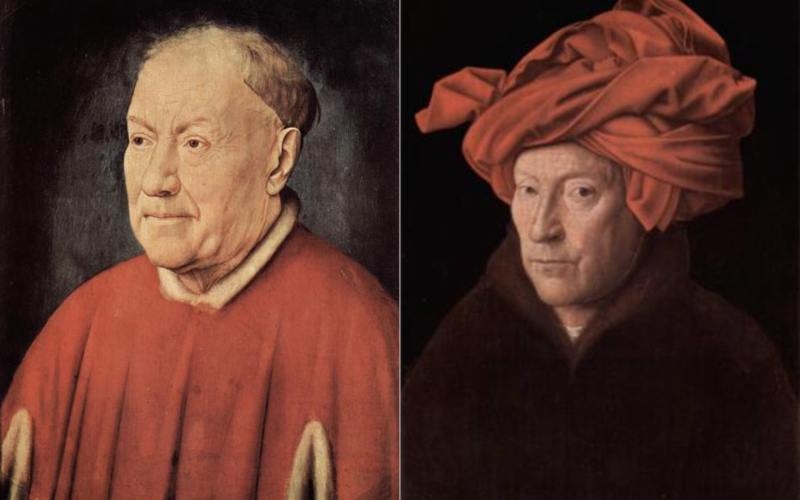The Portrait of Cardinal Niccol Albergati, a work by the early Netherlandish artist Jan van Eyck, is currently on display at the Kunsthistorisches Museum in Vienna, Austria. It was created sometime around 1431.
Martin V’s diplomatic staff included Niccol Albergati. He met van Eyck during a peace assembly in Antwerp, and the artist sketched him there while taking notes on the colors for a later painting portrait. The drawing is currently housed in Dresden, Germany’s Staatliche Kunstsammlungen.
As was customary in Flemish painting since the 1430s, the cardinal is shown from three-quarters, against a dark background that draws attention to the figure, which is instead illuminated by a strong light source. Due to van Eyck’s technique of applying repeated layers of oil-diluted colors, which allowed him to achieve intense effects of transparency and lucidity, his attention to detail is at its highest level, as is typical of his work.
Van Eyck altered several realistic aspects, including the depth of the shoulders, the lower curve of the nose, the depth of the lips, and most notably the size of the ear, from the preparatory design, probably to accentuate the cardinal’s seniority and, as a result, his authority.
Briefing on Jan van Eyck’s Life
Jan van Eyck was a Bruges-based Early Netherlandish painter who lived from before around 1390 to 9 July 1441. He is frequently regarded as a founding figure of Early Netherlandish painting and as one of the most important figures in Northern Renaissance art.
According to the little documents of his early life that have survived, he was born between 1380 and 1390, most likely in Maaseik. Around 1422, when he was already a master painter with workshop assistants, he accepted employment at the Hague as painter and Valet de chambre with John III the Pitiless, ruler of Holland and Hainaut.
Following John’s passing in 1425, van Eyck worked for Philip the Good, Duke of Burgundy, as his court painter in Lille until 1429 before relocating to Bruges, where he remained until his death.
He was well-liked by Philip and made a number of diplomatic journeys abroad, including one to Lisbon in 1428 to investigate the viability of a marriage alliance between the duke and Isabella of Portugal.
In addition to the Ghent Altarpiece and the illuminated miniatures of the Turin-Milan Hours, roughly 20 surviving works with dates ranging from 1432 to 1439 are confidently credited to him.
A variation of his slogan, ALS IK KAN (As I (Eyck) can), usually inscribed in Greek characters and always a play on his name, appears on twelve of them, including the Ghent altarpiece.
Both secular and religious subjects, including as altarpieces, single-panel religious figures, and commissioned portraits, were painted by Van Eyck.


